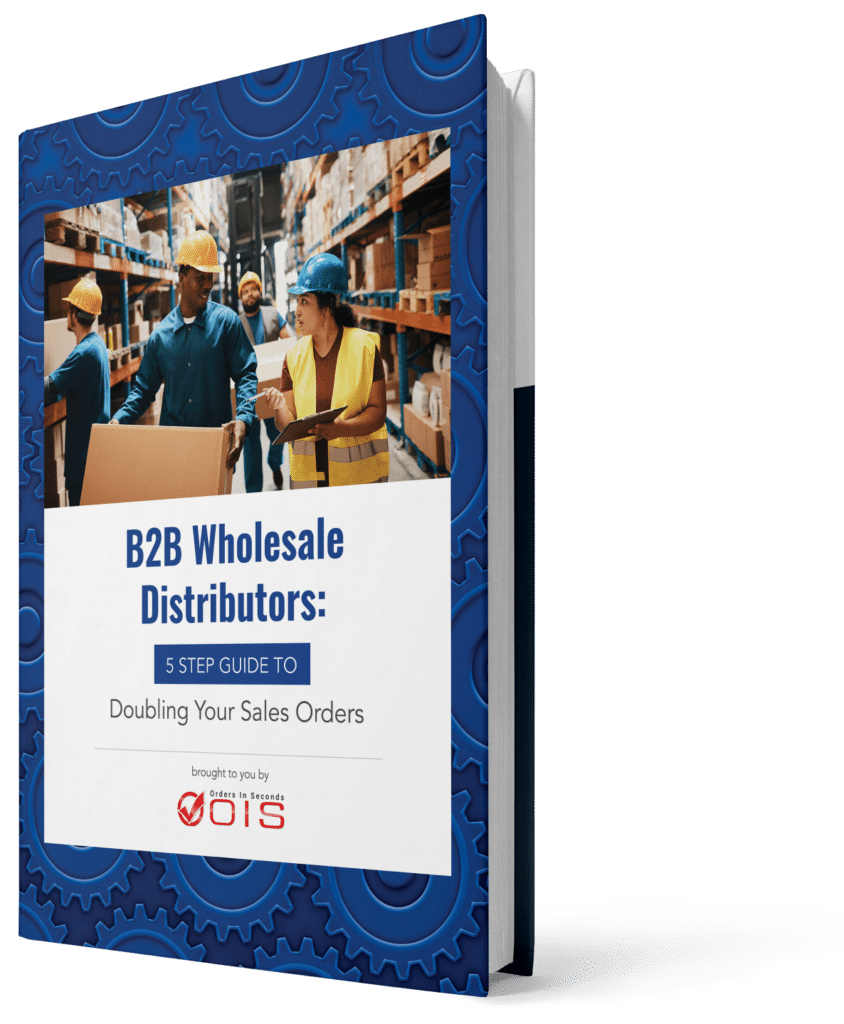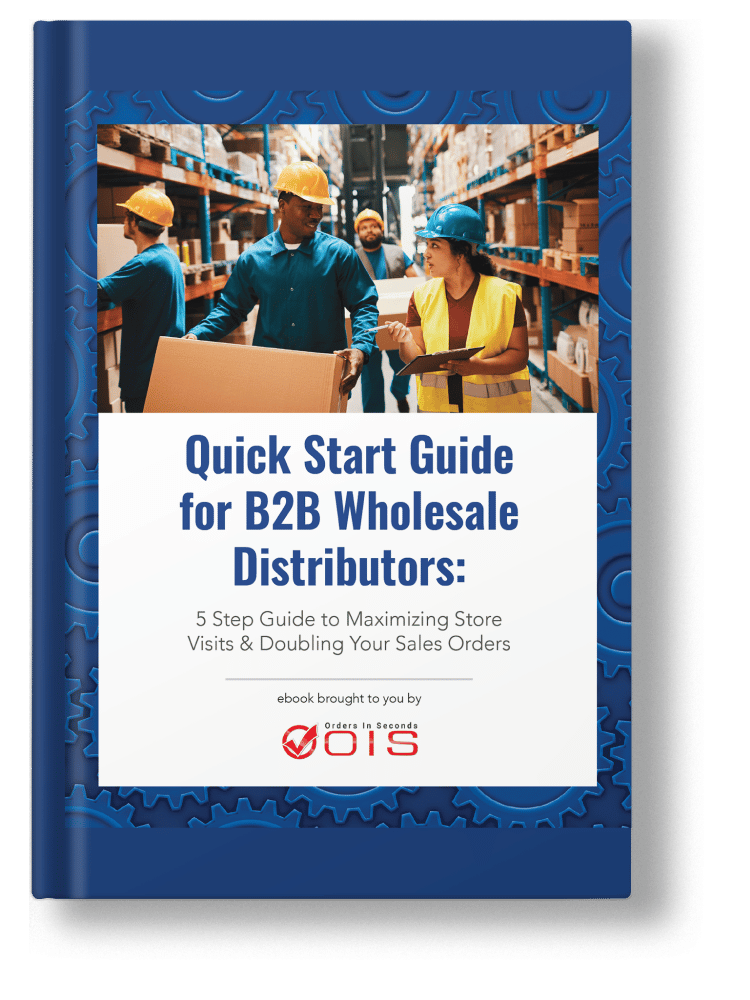MOQ, or Minimum Order Quantity, is the smallest number of units a business will sell to a customer in a single order. Understanding MOQ meaning is crucial for both suppliers and buyers, as it impacts profitability, inventory management, and overall business operations. This article will explain the basics of MOQ, its significance, and how to calculate it effectively.
Key Takeaways
- Minimum Order Quantity (MOQ) is essential for maintaining profitability and effective inventory management, balancing between high and low quantities based on business strategy.
- Suppliers set MOQs to ensure cost efficiency and effective inventory control, minimizing overstock and understock situations that can harm profitability.
- Accurate demand forecasting, comprehensive training for sales teams, and clear communication with customers are critical for successfully implementing and managing MOQs.
Table of Contents
- Understanding MOQ: The Basics
- Why Suppliers Set Minimum Order Quantities
- How MOQs Impact Ecommerce Businesses
- Calculating Your Minimum Order Quantity
- Optimizing MOQ for Your Business
- Benefits of Minimum Order Quantities
- Implementing MOQ in Your Business
- Summary
- Frequently Asked Questions
- Optimize Your MOQ Strategy with OIS Solutions
Understanding MOQ: The Basics

A minimum order quantity (MOQ) represents the smallest number of items that a business is willing to sell. It is a fundamental aspect of the sales agreement between the business and the customer. This concept helps determine the most economic order quantity and ensures businesses can calculate minimum order quantity to meet customer demand effectively. Setting an MOQ ensures customer orders remain profitable, helping maintain healthy profit margins and operational efficiencies, especially when there is a low minimum order quantity. Additionally, understanding the minimum quantity can further enhance inventory management.
Understanding MOQ is key to profitability and maintaining product stock availability. Higher MOQs can boost profitability for low-cost items by securing profit margins. Balancing profitability and inventory management is central to setting a supplier’s MOQ.
The goal is to meet customer demand while optimizing business operations.
High vs. Low MOQ
High MOQs often indicate a business model targeting larger clients committed to higher volume purchases. This reflects the seller’s target market, selling products in large quantities to streamline operations and minimize administrative costs. High minimum order quantity can act as an entry barrier. This benefits larger clients who can commit to significant purchase volumes. For example, a company might set an MOQ of 50 units or $500 worth of product for wholesale or retail partnerships.
Conversely, low MOQs allow suppliers to offer smaller batches while maintaining profit margins. This reduces the amount of inventory suppliers need to hold, beneficial in fast-moving industries. However, low MOQs can lead to higher administrative costs due to constant processing of smaller orders. Ecommerce brands must balance setting higher MOQs at lower prices against lower MOQs at higher prices per unit.
Low MOQs can attract a broader customer base and allow businesses to test new products or markets without significant investment, but they also put higher pressure on the sales team to increase sales. Conversely, high MOQs reduce the risk of customers placing orders without completing payment.
The choice between high and low MOQs depends on the business’s strategy, target market, and operational capabilities.
Why Suppliers Set Minimum Order Quantities

Suppliers set minimum order quantities (MOQs) for several reasons, primarily to ensure profitability and efficient inventory management. Factors like procurement, labor, and shipping costs influence the pricing suppliers set for their MOQs. Accurate maintenance of MOQs supports effective inventory management, preventing overstocking and financial losses.
In essence, profit margins, production costs, and inventory control are key reasons for establishing MOQs.
Cost Efficiency
Cost efficiency is a major reason for setting MOQs. Implementing MOQs helps businesses lower administrative expenses by reducing order frequency. Ordering raw materials in bulk secures better prices and lowers production costs. Bulk purchasing also reduces labor costs for larger orders, making the process more cost-effective.
Additionally, MOQs enable suppliers to achieve cost savings through economies of scale. Bulk orders streamline operations, reduce administrative costs, and enhance overall efficiency. This approach saves money and generates sufficient revenue to meet customer demand effectively.
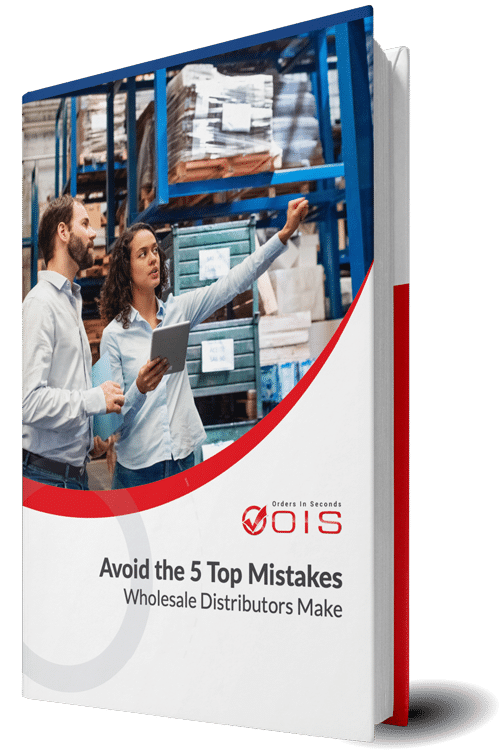
Avoid the Top 5 Mistakes Wholesale Distributors Make
Are you making one of the top 5 mistakes that plague wholesale distributors? Download our free eBook to find out. We’ve also included tips and guidance to help you save time and avoid costly mistakes.
Inventory Control
Effective inventory control is another critical reason for setting MOQs. MOQs help optimize inventory levels to align with customer demand, ensuring businesses maintain sufficient inventory without overstocking. This balance prevents both overstocking and understocking, avoiding financial losses.
Implementing MOQs significantly lowers storage costs by preventing excess inventory. Understanding holding costs and their impact on profitability helps businesses determine feasible inventory levels without incurring losses.
Effective use of MOQs allows businesses to optimize inventory management, reduce holding costs, and be prepared to fulfill orders efficiently.
How MOQs Impact Ecommerce Businesses
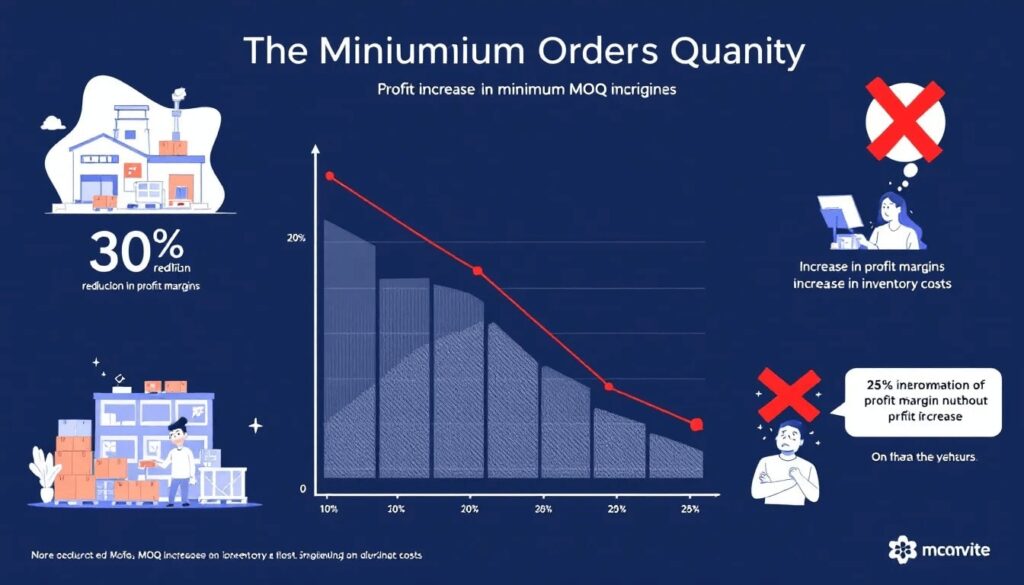
MOQs play a crucial role in the success of ecommerce businesses. Implementing MOQs helps businesses meet demand effectively and creates opportunities for cost savings through bulk purchasing. MOQs help businesses optimize inventory levels, enhance service levels, and ensure profitability during sales.
Miscalculating MOQs can negatively affect profitability by causing overstocking or stockouts, resulting in lost sales. Thus, understanding and setting the right MOQ is vital for the smooth operation and growth of ecommerce businesses.
Cash Flow Management
Managing cash flow is vital for businesses, especially when dealing with MOQs. High MOQs can create cash flow challenges by locking up capital in excess inventory, delaying return on investment. Challenges include tying up capital in inventory, leading to cash flow problems and delayed return on investment.
Effective inventory management and forecasting are essential to overcoming these challenges. Accurate demand forecasting and setting appropriate MOQs ensure businesses have enough inventory to meet customer demand without tying up too much cash. This balance maintains healthy cash flow and supports business growth.
Supplier Relationships
Clear communication about MOQs is key to maintaining positive supplier relationships. Misunderstandings about MOQ requirements can strain these relationships and impact the supply chain. Openly discussing MOQs with suppliers strengthens relationships and ensures alignment.
Strong supplier relationships are essential for ecommerce businesses to fulfill orders efficiently and meet customer demand. Maintaining transparent communication and negotiating favorable MOQs ensure a smooth supply chain and enhance overall operational efficiency.
Calculating Your Minimum Order Quantity
Calculating your MOQ involves several factors and lacks a fixed formula. Factors such as demand forecast, storage capacity, budget constraints, negotiation opportunities, lead times, EOQ principles, and supplier terms play a crucial role in determining the right MOQ.
Accurate demand forecasting, scenario planning, and volume discount calculations help identify the appropriate MOQ for your business.
Determine Demand
Estimating demand is critical for determining the MOQ. Factors like product type, market trends, and accurate sales history help businesses make informed MOQ decisions. Demand forecasting considers seasonality, competition, and market conditions to refine MOQ calculations.
Tracking accurate sales history and understanding market trends enable businesses to predict future demand more accurately. This foresight helps set MOQs that align with customer demand and inventory levels, ensuring efficient order fulfillment.
Analyze Production Costs
Analyzing production costs is crucial when setting MOQs. Production costs encompass both fixed and variable expenses; understanding these can lead to more competitive MOQ settings. Costs for determining MOQ typically include procurement, labor, and shipping.
Warehousing costs impact MOQ levels as they affect profitability and fulfillment capacity. To find the break-even point, consider fixed and variable costs, storage, and transportation expenses, then divide total costs by the selling price minus the variable cost.
This analysis helps set MOQs that ensure profitability while meeting customer demand.
Calculate the Break-Even Point
The break-even point is the level of sales where total revenues equal total costs, resulting in zero profit. Suppliers set the MOQ above the break-even point to ensure profitability. Calculate the break-even point by dividing total costs by the difference between selling price and variable cost.
For example, if an ecommerce brand sets a selling price of $2 per unit and calculates a break-even quantity of 50 units, they need to generate $100 to break even. Higher product prices allow for lower MOQs, whereas lower prices typically require higher MOQs to cover costs.
Revenues must exceed total expenses to turn a profit above the break-even point.
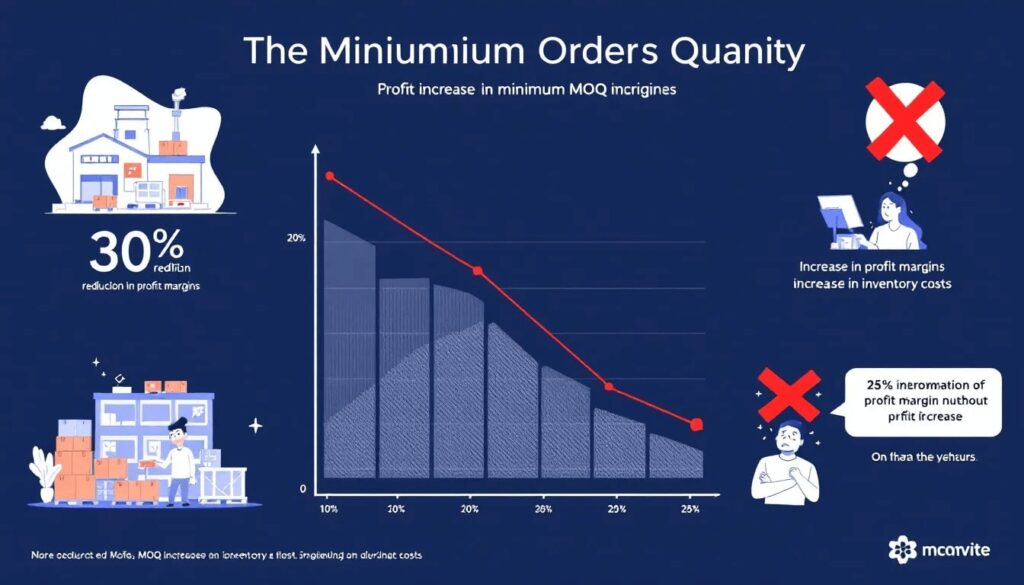
Optimizing MOQ involves strategies like negotiating with suppliers, using inventory management software, and eliminating slow-moving products. These strategies help businesses set MOQs that align with sales projections and operational capabilities, ensuring cost efficiency and profitability.
Use Inventory Management Software
Using inventory management software streamlines procurement and inventory processes by providing real-time visibility into stock levels and demand. Such software keeps accurate records of stock and streamlines procurement processes.
Advanced inventory management software can analyze historical sales data to better forecast demand, ensuring effective inventory management and optimized MOQs. Automating reorder processes ensures inventory levels are maintained without manual intervention.
Negotiate with Suppliers
Negotiating with suppliers can help lower MOQs that may initially be higher than expected sales. Creative approaches like mixing and matching products or using leftover stock from canceled orders can help negotiate favorable MOQs. If a supplier’s MOQ is too high, consider negotiating a compromise or ordering different products to meet the requirements.
When considering minimum quantities, analyzing cost per unit, shipping, and handling fees can save money and help negotiate better terms. If negotiations fail, exploring alternatives like handling surplus inventory or finding different suppliers can ensure the business remains cost-effective and efficient.
Eliminate Slow-Moving Products
Eliminating slow-moving products is crucial for optimizing inventory and reducing costs. Regularly reviewing SKU performance helps identify underperforming items to remove from inventory. This practice not only frees up warehouse space but also reduces the financial burden of holding unproductive inventory, leading to more efficient inventory management.
Benefits of Minimum Order Quantities
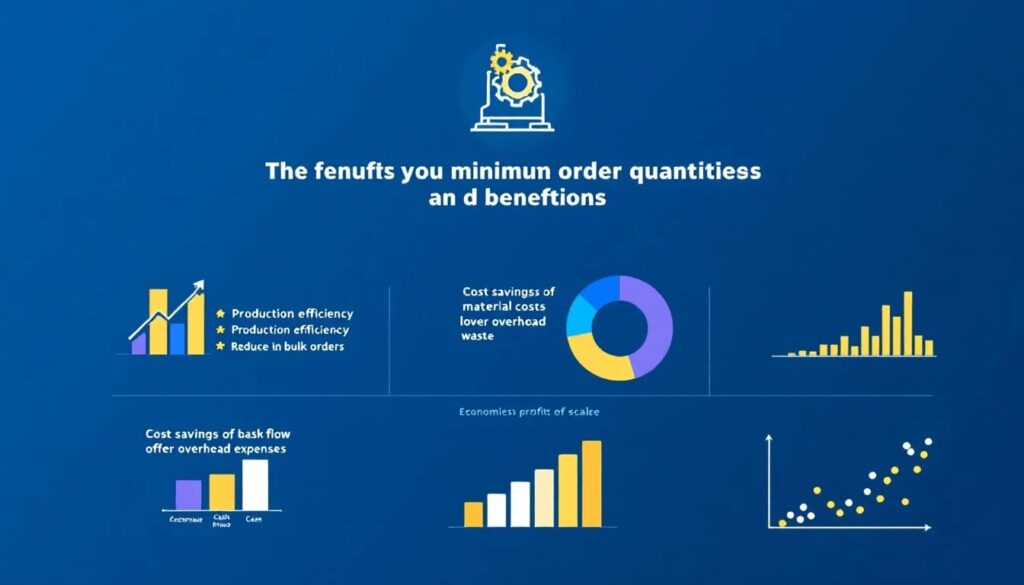
Implementing a minimum order quantity (MOQ) policy can significantly enhance sales and improve cash flow. MOQs enhance sales forecasting accuracy, allowing suppliers to better plan their production. They also strengthen a supplier’s bargaining position with suppliers by facilitating larger orders and increasing efficiency in order fulfillment.
Both buyers and suppliers benefit from effective MOQ management, leading to improved inventory control and cost reduction.
For Suppliers
For suppliers, setting MOQs leads to cost efficiencies, improved cash flow, and reduced inventory costs. Effective management of MOQs ensures that production is aligned with profitable quantities, maintaining better cash flow. Implementing MOQs also reduces reliance on warehouse space and cuts costs associated with holding unproductive inventory.
Building strong relationships with suppliers facilitates easier negotiations and ensures stable pricing, benefiting long-term profitability. These relationships also enable suppliers to meet customer demand more efficiently, leading to a more streamlined supply chain and improved operational efficiency.
For Buyers
Buyers often gain cost advantages by purchasing in bulk, which is encouraged by MOQ practices. Cost savings are realized through bulk buying discounts and reduced per-unit costs. Building strong relationships with suppliers can lead to better negotiation outcomes for lower MOQs.
Stronger supplier relationships develop as a result of the commitment shown through larger purchases, enabling buyers to meet customer demand more effectively. This commitment also fosters trust and collaboration, ensuring that both the seller and buyer benefit from the arrangement.
Implementing MOQ in Your Business
Implementing MOQ in your business requires clear communication and training. Informing existing customers about MOQ changes ensures a smooth transition and maintains trust.
Training the sales team is crucial to ensure they understand and can explain new MOQ policies effectively to customers. This process involves providing FAQs and detailed information to aid in customer interactions, ensuring consistent messaging and customer satisfaction.
Inform Existing Customers
Providing clear and timely notifications about MOQ adjustments can prevent misunderstandings and promote transparency. It’s crucial to notify existing customers about MOQ changes well in advance, allowing them to adjust their purchasing strategies accordingly. Using various channels such as emails and newsletters can effectively convey MOQ changes to customers and address their concerns.
Communicating these changes helps maintain customer trust and ensures that they are well-prepared for the new purchasing requirements. This proactive approach also demonstrates the business’s commitment to transparency and customer satisfaction.
Train Your Sales Team
Educating the sales team on new MOQ policies is crucial for consistent messaging and building customer trust. Sales teams need comprehensive training on the implications of MOQs to ensure they can effectively communicate these changes to customers. Regular training sessions on MOQ policies equip sales staff to confidently address customer inquiries and maintain a consistent message. One simple way to reinforce learning is by creating short, engaging training videos your team can watch anytime.
By training the sales team, businesses can ensure that all customer interactions are handled professionally and that any concerns about MOQ changes are addressed promptly and accurately. This training ultimately enhances the overall customer experience and supports the successful implementation of MOQs.Summary
In summary, understanding and implementing Minimum Order Quantities (MOQs) is essential for optimizing profitability and operational efficiency. From calculating MOQs based on demand and production costs to negotiating with suppliers and using inventory management software, businesses can leverage MOQs to enhance their performance. By effectively communicating MOQ changes and training the sales team, businesses can ensure a smooth transition and maintain customer trust. Embrace these strategies to unlock the full potential of MOQs and drive your business towards greater success.
Frequently Asked Questions
A Minimum Order Quantity (MOQ) represents the minimum number of items a supplier is willing to sell to a customer. Understanding MOQs helps businesses manage inventory and production effectively.
Suppliers set MOQs to maintain profitability and minimize costs associated with production and inventory management. This approach helps them streamline operations and ensure efficiency.
High MOQs can negatively impact cash flow for eCommerce businesses by tying up capital in excess inventory, which delays returns on investment. It’s essential to manage inventory levels carefully to maintain healthy cash flow.
Inventory management software enhances efficiency by providing real-time visibility into stock levels and automating reorder processes, which ultimately helps in optimizing minimum order quantities (MOQs). This ensures that you maintain adequate inventory without excess costs.
The benefits of MOQs for buyers include cost savings from bulk purchasing, enhanced supplier relationships, and improved capability to meet customer demand. This ensures more efficient operations and greater profitability.
Optimizing MOQ Strategy with OIS Solutions
Understanding and managing your Minimum Order Quantity (MOQ) is critical to profitability and operational efficiency. With Orders in Seconds, you can simplify every step of the process. OIS Pro empowers your field sales team to place accurate, customer-focused orders seamlessly, while OIS Inventory ensures error-free order picking and real-time inventory visibility to support smarter inventory management.
Streamline your operations, reduce inefficiencies, and stay ahead of demand with OIS solutions.




